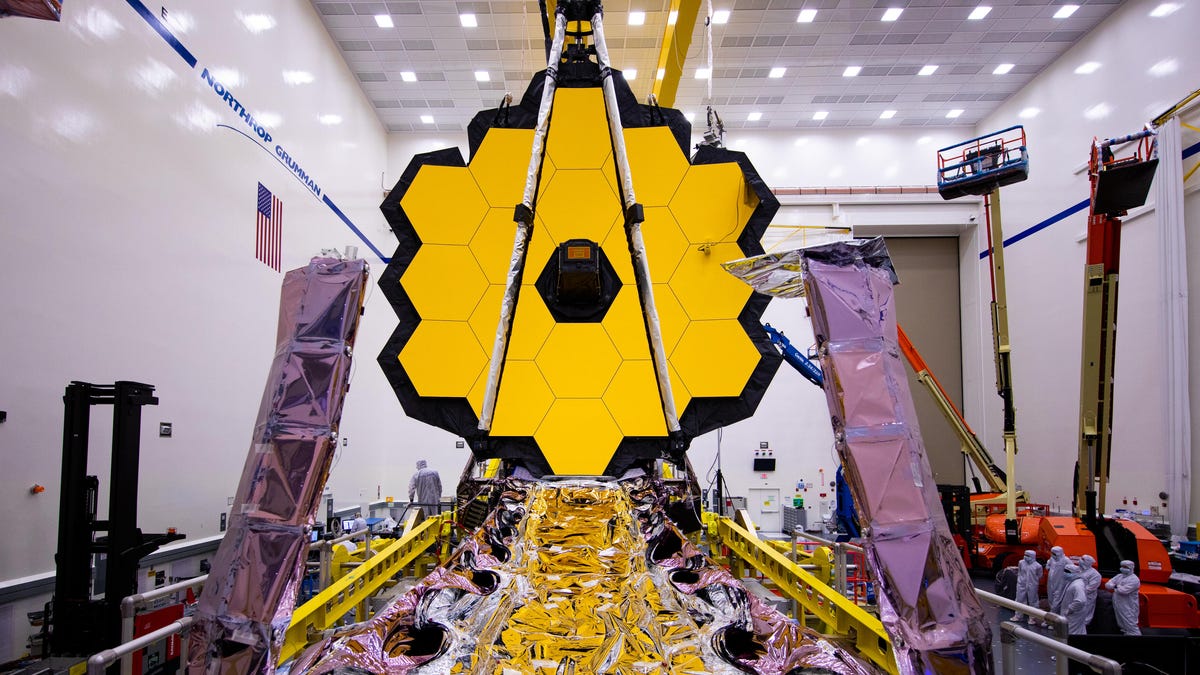NASA: James Webb telescope OK after incident, and fueling is underway
The space agency's assessment follows a "sudden, unplanned release of a clamp band" that shook the telescope last week.
The James Webb Space Telescope is a very big, very overdue, very sensitive project. After years of delays, it was supposed to launch on Dec. 18 and become NASA's new flagship observatory. The launch has been pushed to Dec. 22 after a recent incident during launch preparations.
The telescope is in the process of attachment to the Ariane 5 rocket that will escort it into space. "A sudden, unplanned release of a clamp band -- which secures Webb to the launch vehicle adapter -- caused a vibration throughout the observatory," NASA said in a statement on Nov. 22.
A NASA-led anomaly review board set about testing the telescope for damage. Two days later, the space agency announced that Webb is healthy and ready for flight. The clean checkup meant launch fueling operations could begin, a process that started on Thursday and takes about 10 days to complete.
A joint project of NASA, the European Space Agency and the Canadian Space Agency, the telescope is at its launch site at Europe's Spaceport in French Guiana, along the northeast coast of South America. Webb already survived a long journey by road and sea from California via the Panama Canal.
James Webb is the next generation of space telescopes, designed to peer back into the earliest universe. NASA hopes it and the aging Hubble Space Telescope will operate at the same time, but first Webb needs to launch safely and make it through a complicated and lengthy deployment process.


